Fracture of the Thoracic and Lumbar Spine
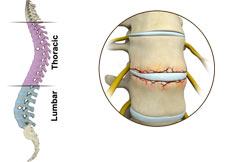
The backbone is made of small bones arranged from the neck down to the buttocks, one above the other. The region at the chest and lower back are called the thoracic and lumbar spine, respectively. These are the two regions commonly affected by a fracture.
Diffuse Idiopathic Skeletal Hyperostosis (DISH)
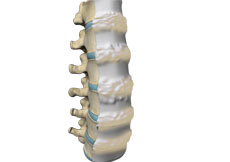
Diffuse idiopathic skeletal hyperostosis (DISH) is a condition that commonly affects the spine. It is characterized by calcification (bony hardening) of ligaments, tendons and joint capsule insertions. Usually, the upper portion of the back (thoracic spine) is affected, but it may also involve the neck (cervical spine) and lower back (lumbar spine).
Thoracic Outlet Syndrome
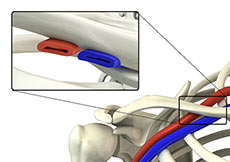
The thoracic outlet is a small passageway leading from the base of the neck to the armpit and arm. This small area contains many blood vessels, nerves, and muscle.
Lumbar Radiculopathy
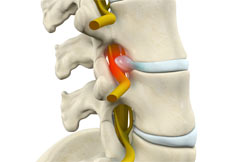
Back pain is a common condition affecting approximately 80% of the population at some point in their lives. The area usually affected is the lower back (lumbar region) as it bears most of the upper body’s weight. Trauma to the spine, age and overuse can result in deterioration of the vertebral bones and joints or bulging of the discs.
Lumbar Stenosis
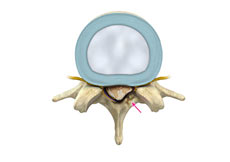
Lumbar stenosis is the compression of spinal nerves caused by the narrowing of the spinal canal. It is one of the common causes of lower back pain. Spinal stenosis can also affect the spine in the neck region.
Lumbar Disc Herniation
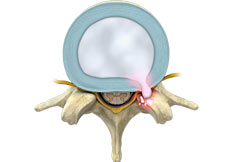
Lumbar disc herniation is the most common cause of lower back pain and leg pain (sciatica). Aging, injury or trauma may cause the annulus fibrosus to tear, resulting in protrusion of the nucleus pulposus. This may compress the spinal nerves and/or spinal canal.
Disc Herniation
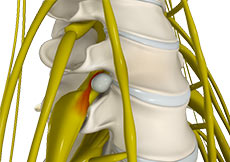
Disc herniation is a condition where the central nucleus pushes through the outer edge of the disc, causing a bulge that compresses the spinal nerves.
Spondylolysis
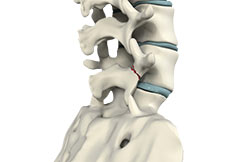
Spondylolysis is a stress fracture in the vertebra that may progress into spondylolisthesis, a condition where the vertebra gets displaced from the spinal column. Spondylolysis is the cause of frequent low back pain in children. It is more common among children and teenagers who participate actively in sports such as football, weightlifting, and gymnastics.
Cervical Spondylosis
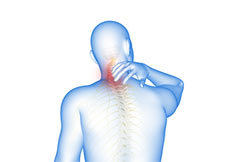
Cervical spondylosis, also called arthritis of the neck, is an age-related medical condition characterized by deterioration of spinal joints, vertebrae, discs, and ligaments in your neck.
Back Pain

Back pain or backache is the pain felt in the back that may originate from damage to the muscles, nerves, bones, joints or other structures in the spine. Back pain is one of the most common medical problems experienced by most people at some time in their life. It can be acute, usually lasting from a few days to a few weeks, or chronic, lasting for more than three months.
Spondylolisthesis

Spondylolisthesis is the displacement of the vertebral disc from the spinal column. Outward (forward) displacement is termed as anterolisthesis and inward (backward) displacement is termed as retrolisthesis.
Spine Deformities
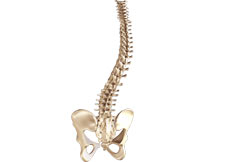
The spine or backbone provides stability to the upper part of our body. It helps to hold the body upright. It consists of a series of irregularly-shaped bones appearing in a straight line.
Facet Joint Arthritis
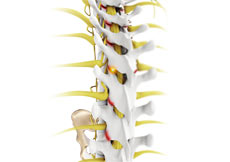
Facet joints, also called zygapophyseal joints, are synovial joints located at the back of your spine, connecting the vertebrae together.
Sciatica

The sciatic nerve is the longest nerve in your body. It begins in the lower back and extends through the buttocks down the back of each leg to the thighs and feet.
Scoliosis

Scoliosis is a condition characterized by the abnormal curvature of the spine that causes a deviation to one side. It causes a physical deformity, making the spine look like the letter “C” or “S” instead of the letter “I”.
Degenerative Disc Disease
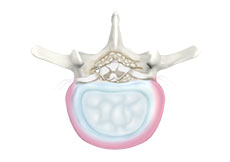
Degenerative disc disease (DDD) refers to the gradual deterioration of the intervertebral discs between the vertebrae. DDD is a misnomer as it is not actually a disease but a condition that affects the strength, resilience and structural integrity of the intervertebral discs due to advancing age, trauma, injury, repetitive movement, improper posture or poor body mechanics.
Cauda Equina Syndrome
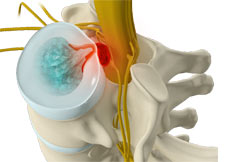
What Cauda equina syndrome is an emergency condition characterized by persistent severe lower back pain caused by the compression of a bundle of spinal nerves (cauda equina) at the end of the spinal cord (lower back and hip region).
Kyphosis

Kyphosis is a condition of abnormal curvature of the spine that causes rounding of the upper back or a hunchback. The thoracic portion of the spine normally has a C-shaped curve, but excessive forward curve in the spine leads to kyphosis.
Sacroiliac Joint Dysfunction
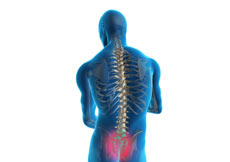
Sacroiliac joint dysfunction or sacroiliac joint pain is one of the common causes of low back pain.
Chordoma
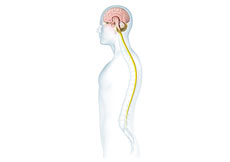
Chordoma is a rare, slow-growing malignant tumor that develops in the spine and skull bones. It is thought to form from the remnants of the notochord (a preliminary structure present in a developing baby in the womb, which eventually forms the spinal cord).
Adjacent Segment Disc Disease
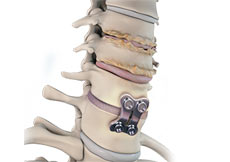
Spinal fusion surgery involves the fusion of two or more vertebral bones and is a standard of care for spinal deformities and conditions such as radiculopathy, myelopathy, and spondylolisthesis.
Ankylosing Spondylitis

Sacroiliac joints are present in the lower back where the sacrum part of the vertebrae joins the iliac bones. The term ankylosis stands for loss of mobility of the spine, whereas spondylitis means inflammation of the spine.
Lordosis
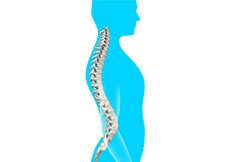
The spine forms a natural curve at the neck, torso, and lower back, which allows it to absorb shock and hold the weight of your head. When this curvature is accentuated at the lower back, it is called lordosis.
Spina Bifida
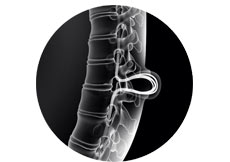
Spina bifida is a congenital condition (birth defect) in which there is abnormal development of the back bones, spinal cord, surrounding nerves, and the fluid-filled sac that surrounds the spinal cord. This is a neurological condition that causes a section of the spinal cord and the surrounding structures to develop outside, instead of inside, the body.
Vertebral Compression Fractures
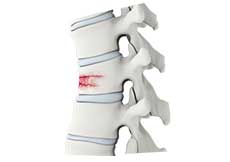
Back pain is an indication of stress fractures known as vertebral compression fractures. Vertebral compression fractures occur when the normal vertebral body of the spine is squeezed or compressed. The bone collapses when too much pressure is placed on the vertebrae, resulting in pain, limited mobility, loss of height and spinal deformity.
Spine Trauma
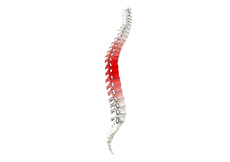
Spine trauma is defined as an injury or damage to any region of the spine. The spine extends from the neck to the lower back and consists of the vertebral bones which surround and protect the spinal cord.
Spondylodiscitis
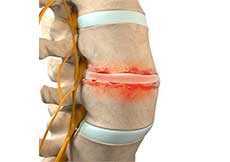
Spondylodiscitis is an infection of the intervertebral discs (between the vertebrae) along with the vertebrae (one of many small bones forming the spine). The condition is a primary infection of one or more intervertebral discs (discitis) with secondary infection of one or more vertebrae (spondylitis).
Arm Pain of Spinal Origin
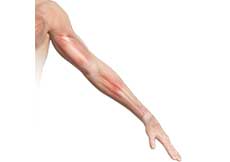
Arm pain of spinal origin can be described as discomfort or pain felt anywhere in the arm including the wrist, elbow, or shoulder as a result of a pinched nerve (nerve compression) or irritated nerve in the spinal cord. The pain can occur as a dull constant pain or a sudden sharp pain that can develop suddenly or over time.
Microdiscectomy
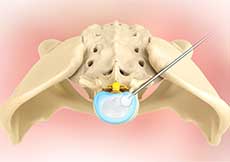
The spine is made up of small bony segments called vertebrae. These vertebrae are categorized into cervical or neck vertebrae, thoracic or upper back vertebrae, lumbar or lower back vertebrae and the sacrum within the pelvis. A cylindrical bundle of nerve fibers called the spinal cord passes through the entire vertebral column and branches out to the various parts of our body.
Lumbar Herniated Disc
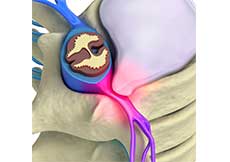
A herniated disc is a condition in which the outer fibers (annulus) of the intervertebral disc are damaged, causing the soft inner material of the nucleus pulposus to rupture out of its space. It is the most common cause of lower back pain and pain that radiates down the leg (radiculopathy).
Lumbar Degenerative Disc Disease
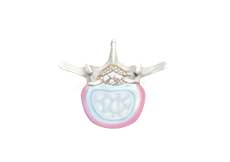
The normal intervertebral disc is composed of a nucleus pulposus at the center, surrounded by a fibrous ring known as annulus fibrosus. The nucleus pulposus is a soft, well hydrated, jelly-like substance that acts as a shock absorber.
Fractures of the Spine
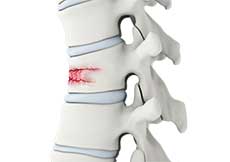
A fracture of the spine is a break in the bone continuity of the spinal vertebrae or vertebral column. The spine extends from the neck to the lower back and consists of the vertebral bones which surround and protect the spinal cord.
Spinal Tumors
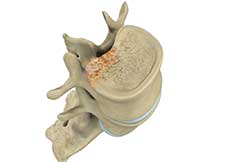
A spine tumor is the abnormal growth of uncontrolled tissues or cells in and around the spinal cord. Tumors can either be cancerous (malignant) or non-cancerous (benign).
Scheuermann's Kyphosis
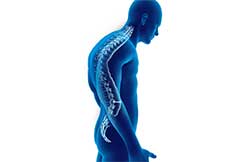
Scheuermann’s kyphosis is a deformity of the spine that develops during growth. It can be considered as increased kyphosis. Kyphosis is the C-shaped curving of the spine and is also known as hunchback.
Spondyloarthropathies
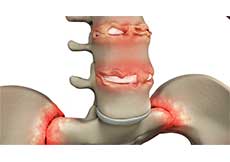
Spondyloarthropathies are a group of chronic inflammatory diseases of the spine and joints. Spondyloarthropathies can occur at any age, however, they occur more often in young males.
Thoracic Myelopathy
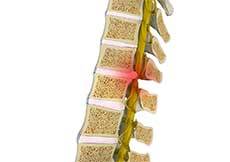
Thoracic myelopathy is a disorder resulting from severe spinal cord compression in the thoracic region. The spinal cord in this region typically gets compressed as a result of bulging or herniated discs, spinal trauma, or bone spurs causing severe pain and discomfort.
Pathological Fractures of the Spine
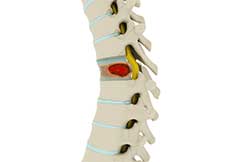
Pathological fractures are broken bones in an area already weakened by another disease, not by an injury. Some underlying diseases can weaken the spinal bones making them brittle and eventually causing a fracture or break in the bone.
Cervical Deformities
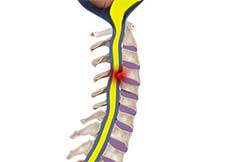
The spine is made up of 33 small bones called vertebrae and is known as the spinal column or vertebral column. It can be divided into 5 parts: cervical, thoracic, lumbar, sacral, and coccyx region. The cervical spine is comprised of the first 7 vertebrae, which supports the neck and the head.
Lumbar Facet Joint Arthropathy
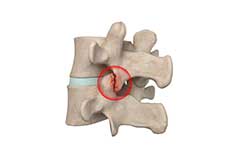
A joint is a place where two bones contact each other. Arthropathy means any disease of the joints. Lumbar facet joint arthropathy occurs when the facet joints degenerate or wear out over time due to aging or arthritis.
Psoas Abscess
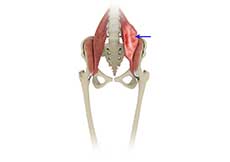
A psoas abscess is a rare medical condition that is defined as a painful collection of pus in the psoas muscle of the spine, located in the lower lumbar region of the spine.
Spinal Infection
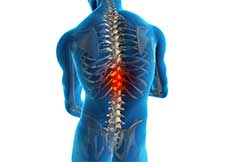
A spinal infection is described as an infection of the spine. It can occur in various locations of the spine i.e., intervertebral disc space, vertebral column, spinal canal, and nearby soft tissues.
Thoracic Nerve Compression
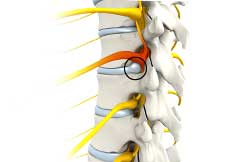
Thoracic nerve compression refers to a compressed nerve root in the thoracic region of the spine, also called the upper back.
Peripheral Nerve Compression
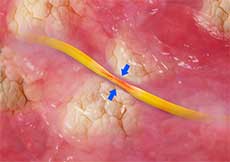
The human body has 2 nervous systems, the central nervous system that includes the brain and spinal cord, and the peripheral nervous system that includes a network of nerves that lie outside the brain and spinal cord.
Poor Balance
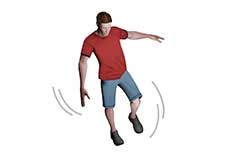
Poor balance can be defined as a sense of unsteadiness on your feet due to dizzy spells or lightheadedness, fainting, blackouts, or loss of consciousness.
Difficulty Walking
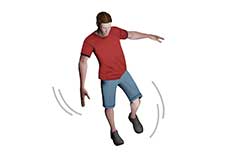
Walking is a complex interaction among multiple systems of the body. Proper walking is a result of balance, sensory function, reflexes, motor function, and many other systems working in conjunction.
Compression of Thoracic Nerve
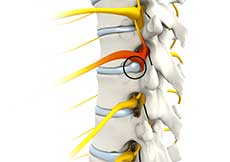
Nerves can undergo compression or become pinched by surrounding structures as they emerge from the spine, a condition called radiculopathy. Nerve compression mostly occurs in the neck or lower back regions which have more mobility, but it can sometimes involve the upper back or thoracic region.
Sagittal Imbalance
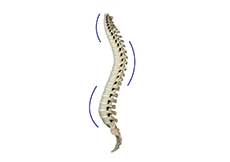
The spine has three natural curves when viewed from the side, an inward curve in the neck and lower spine called lordosis and an outward curve in the mid-back called kyphosis.
Epidural Abscess
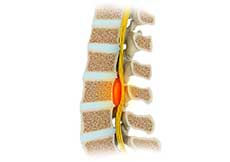
An epidural abscess is a medical condition that can be defined as an infection in the region between the spine, or bones of the skull, and the membranes that surround the spinal cord (meninges) and brain.
Cervical Radiculopathy/Myelopathy
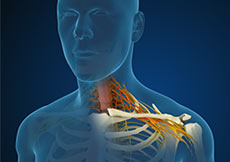
Disc protrusion, also called herniated disc, is a condition caused by a tear in an intervertebral disc, allowing the disc contents to bulge out.
Neck Pain

Common neck pain may occur from muscle strain or tension from everyday activities including poor posture, prolonged use of a computer and sleeping in an uncomfortable position.
Discitis
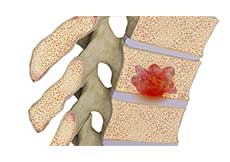
Discitis, also called discitis, is inflammation between the spaces of the intervertebral discs in the spine. Intervertebral discs are located between the vertebrae and spaces between them are called intervertebral disc spaces.
Cervical Fracture
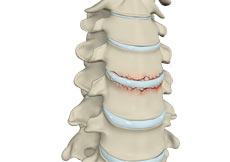
Cervical fractures are common in motor vehicle accidents, sports activities and falls. The second, sixth and seventh cervical vertebrae are frequently involved in fractures, which may injure the spinal cord.
Cervical Herniated Disc
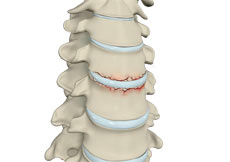
Herniation of a disc is an anomalous spine condition characterized by the bulging of the inner contents of the intervertebral disc due to cracks in its outer wall. A herniated disc is commonly seen in the cervical or neck region and is called cervical herniated disc (CHD).
Cervical Stenosis
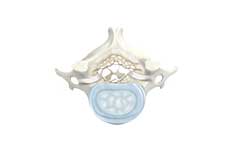
Cervical stenosis refers to the narrowing of the spinal canal that protects the spinal cord and its branching nerves.
Spine Bone Spurs
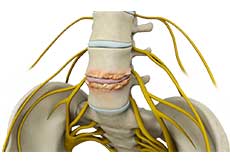
Spine bone spurs, also called osteophytes, are bony projections that develop in the spine’s facet joints where cartilage has worn out or along the vertebral body’s endplates edges. It can grow at any level of the spinal column such as the low and mid-back and in the neck.
Cervical Disc Protrusion
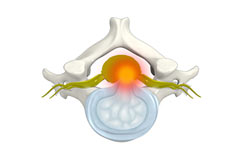
Cervical disc protrusion, commonly known as a disc bulge, occurs when the spinal discs and associated ligaments are intact, but may form an outpouching that presses on the spinal nerves.
Whiplash

Whiplash is a soft tissue injury to the neck, usually caused by a sudden forceful jerk commonly occurring because of an automobile accident, sports injuries or an accidental fall. Headache may develop immediately or after a short period of time after the injury.
Cervical Degenerative Disorder
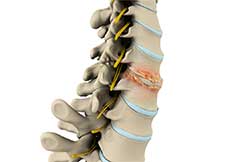
The intervertebral disc is composed of an inflexible ring called the annulus fibrosis which encloses a gelatinous inner structure called the nucleus pulposus. The discs are kept in position with the help of endplates between two vertebral bodies.
Adult Degenerative Scoliosis
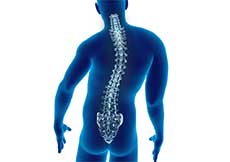
Adult degenerative scoliosis is characterized by side to side or lateral bending of the spine in adults. Degenerative scoliosis can involve either the mid-back and/or lower back region of the spine.
Idiopathic Scoliosis

Scoliosis is a medical condition characterized by an abnormal lateral curvature of the spine, either to the left or to the right. Adolescent idiopathic scoliosis (AIS) is a type of scoliosis that occurs in children between 10 and 16 years of age.
Low Back Pain

Low back pain is often a common symptom of many disease conditions and the back pain may range from simple or dull pain to sudden and sharp pain.
Failed Back Surgery Syndrome
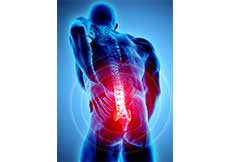
Failed back surgery syndrome is a term used to describe poor results from previous spine surgery.
Radiculopathy
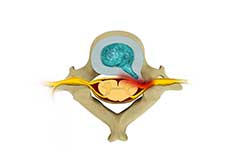
Certain diseases or mechanical compression of these spinal nerves due to deformities in the vertebral column can lead to radiculopathy.




